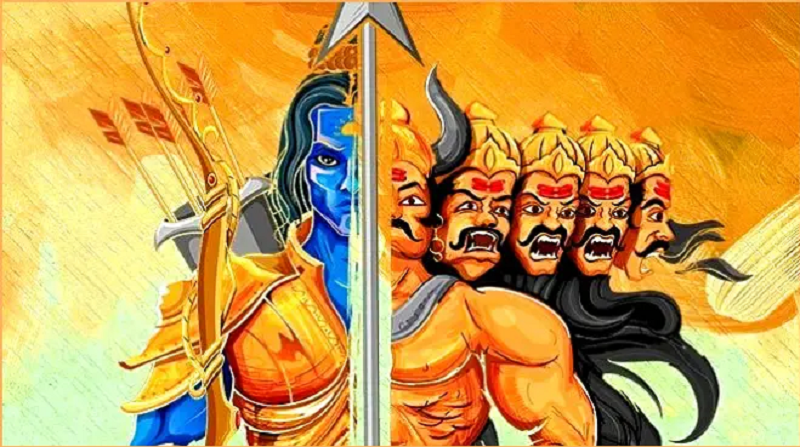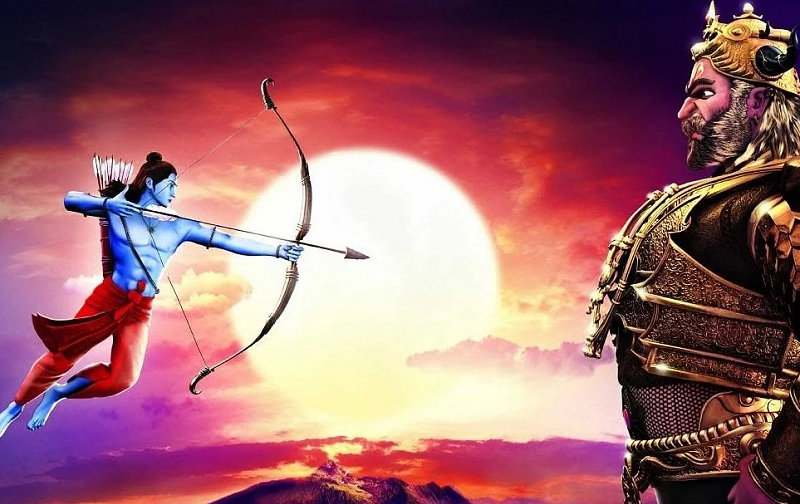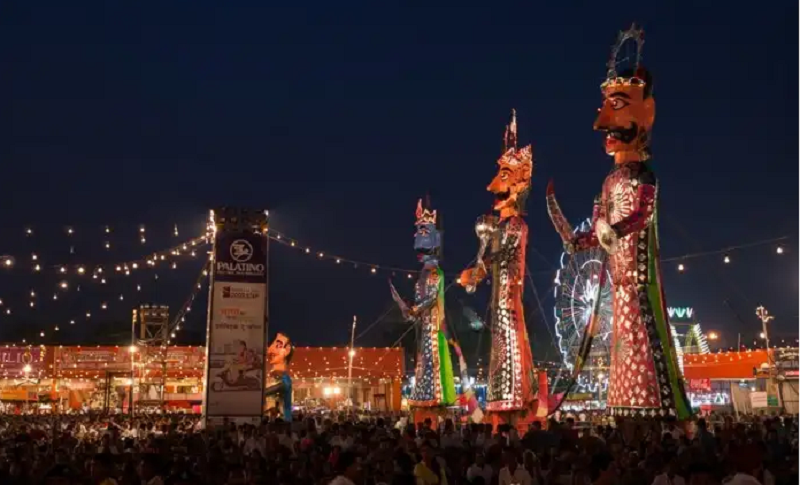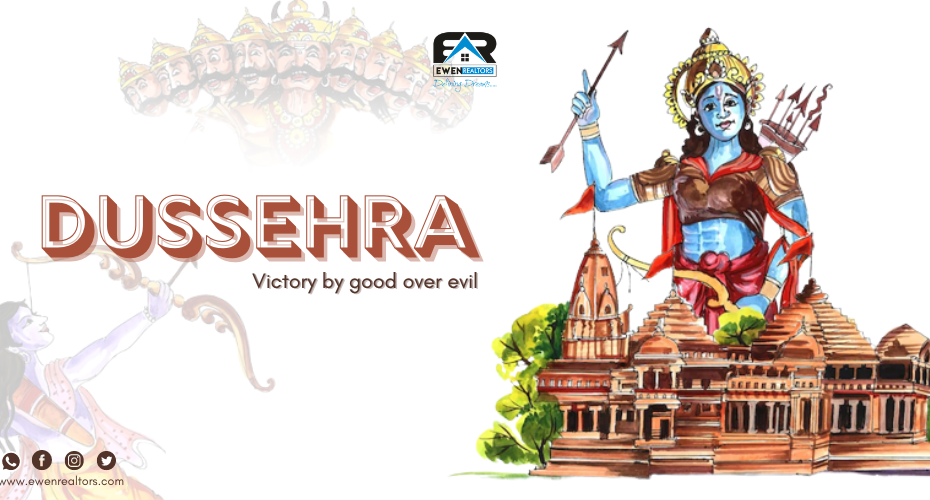Preparation for Dussehra in Almora, Uttarakhand, starting in October means starting of hustle and bustle in the town. Do you know why?
During this time of year, excitement is at its peak. There are numerous festivals lined up, and preparations have already begun.
There is a festive mood in the air as preparations for Dussehra begin early because Dussehra of Almora attracts many tourists every year.
An important theme of the festival is the victory of good over evil. As part of the 10-day celebration, fairs and Ramlila – showcase a glimpse of scenes from the Ramayana.
Almora is one of the most mesmerising place to visit during October. You will have an unmatchable experience because Dussehra in Almora is one of the best things you can witness in your life.
But do you know the story behind the Dussehra? If your answer is no then in this article you will get to know the whole story as well as its significance.
Why Dussehra Is Celebrated?

Dussehra is an important festival in Hindu tradition that teaches us the most important lesson of our life – The victory of good over evil.
India is a land of diverse cultures and traditions so there are various ways in which the festival of Dussehra celebration takes place.
Many southern and eastern states celebrate Dussehra as a celebration of Durga’s victory over Mahishasura’s evil.
Navratri begins on the first day and lasts for nine days. However, many northern and western states celebrate Dussehra as a celebration of Lord Rama defeating Ravana.
The History Behind Dussehra – Lord Rama And Ravana
A long time ago, King Dasharatha want his son Lord Rama ( eldest son) to become the king of Ayodhya. Everyone in the kingdom was more than happy about the decision.
But Queen Kaikeyi wanted her son Bharat to become the king. So, on the coronation ceremony day, Queen Kaikeyi asked for the boons that King Dasharatha granted her.
Queen asked to make his son Bharat the king of Ayodhaya and Lord Rama should be exiled to the forest for 14 years.
King Dasharatha had no choice but to accept them. Lord Rama was exiled and his wife Sita and his brother Laxman also joined him.
So, when the last year of the exhilaration one Rakshasi Surpanakha came to seduce the brothers but didn’t succeed and then she tried to kill Sita.
However, Laxman stooped her and cut off her ears and nose. Humiliated and angry Surpanakha returns to her brother Ravana.
Who Was Ravana?

Ravana was an evil, cruel king but he was very intellectual. He was popular as a king with 10 heads but 10 heads signify he had great knowledge of 4 Vedas and 6 Upanishads.
Ravana was equal to 10 scholars. He also used his powers for evil purposes. Ravana vowed to her sister that he will seek revenge for her humiliation.
So, as revenge, he kidnapped Sita and bring her to his Lanka and asked her to marry him but Sita was a true devotee of Lord Rama.
From the denial, Ravana kept Sita in Ashoka grove. As soon as Lord Rama and Lakshman understood the situation they met Lord Hanuman on their way to save Sita.
Lord Hanuman was a devotee of Lord Rama and he ask him to find Sita and convey his message that Lord Rama is coming to save her.
After he conveys the message safely they all proceed to Lanka and it marks the beginning of a huge battle between Lord Rama’s army and Ravana’s army.
After destroying Ravana’s army Lord Rama confronts 10 head Ravana and reunites with Sita. As soon as their exile is over, they all return to Ayodhya, where Lord Rama finally became King.
How Dussehra In Almora is celebrated?

The Dussehra celebration lasts for 10 days in the northern, western and central parts of the country.
In Almora, people portray Ramayan through dance and drama skits. In all corners of the world, these performances are famous as RamLeela.
Lord Rama valiantly fought against the evil king Ravana in Ram Leela, which depicts the entire story of Ravana’s kidnapping of Maa Sita and Rama’s valiant battle against Ravana.
During Dussehra, people burn huge effigies of Ravana to symbolize Lord Rama’s victory and his reunion with Sita on the tenth day.
Significance Of Dussehra In Almora
Almora is known for its culture and traditions. It is popular as the land of culture in Uttarakhand. So, Dussehra in Almora has its significance and people here celebrate Dusshera with great enthusiasm.
Let’s know what is the significance of Dussehra.
According to Hindu tradition, Ravana represents Ego and Rama represents Goodness. All men are battling with good (Rama) & evil (Ravana), both physically, mentally, and emotionally.
In the presence of a Divine Soul “Satguru”, ego and negativity begin to lose their grip on us. It becomes evident that Rama’s stronghold grows stronger with surrender and unconditional love.
Rama’s victory over Ravana (good over evil) is the success of divine knowledge, love, and happiness over ego and negativity.
The only thing that exists when Rama wins is Light (Eternal Happiness). It is up to us to make the decision.
The choice is between becoming Ravana & getting caught up in worldly pleasures or becoming Rama.
We should all take Dussehra as an opportunity to burn all the vices growing within us. With Satguru coming into our lives, we should let Rama win.
You may also like to read: Festival Of Lights – Diwali In 2022
FAQs
Conclusion
Almora’s Dussehra is very popular in India and it attracts a huge number of tourists every year. You can add Almora to your list to visit during October.
Dussehra has its significance in Hindu tradition and it also gives us a very important life lesson – Good always wins over evil.
Rama is a symbol of love, positivity, and eternal happiness and on the other hand, Ravana is a symbol of ego, negativity and hate.
Likewise, we all deal with positivity and negativity in our life in every way physically and emotionally.
Dussehra brings positivity and happiness to our lives and teaches us how good always wins over evil.
